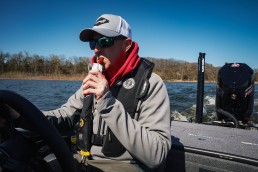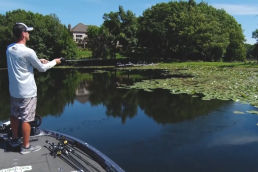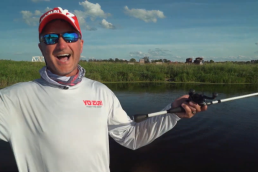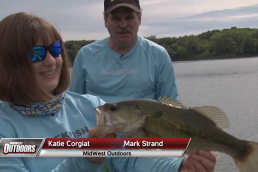Three Hotspots/Techniques for Summer Bass
SHARE THIS POST
Now that warm, stable, summer weather has taken hold and water temperatures have climbed, bass are locked into their summer patterns…and hungry. Here are three early-summer techniques to employ on your local lake.
Crankbaiting medium depths
A good population of bass transitions back to their offshore haunts and holds there for the remainder of the summer months; others will cruise mid-depth weed lines and flats, feeding on panfish and small baitfish.
Depending on the body of water you are fishing, the type of vegetation will vary; and depending on the lake, certain forms of vegetation will hold bass more often. For example, on Minnesota lakes, you will want to search out the edges of milfoil lines, coontail clumps or cabbage fields.
Whenever you are fishing a weed line or weed flat, search for key differences that set a certain section apart from the rest. Many times, the fish-holding areas of a weed line are on a contour change. This may mean a turn (going from shallow to deep, or deep to shallow) of the weed line, a depth change (even if it only slight), or relationship to deeper water.
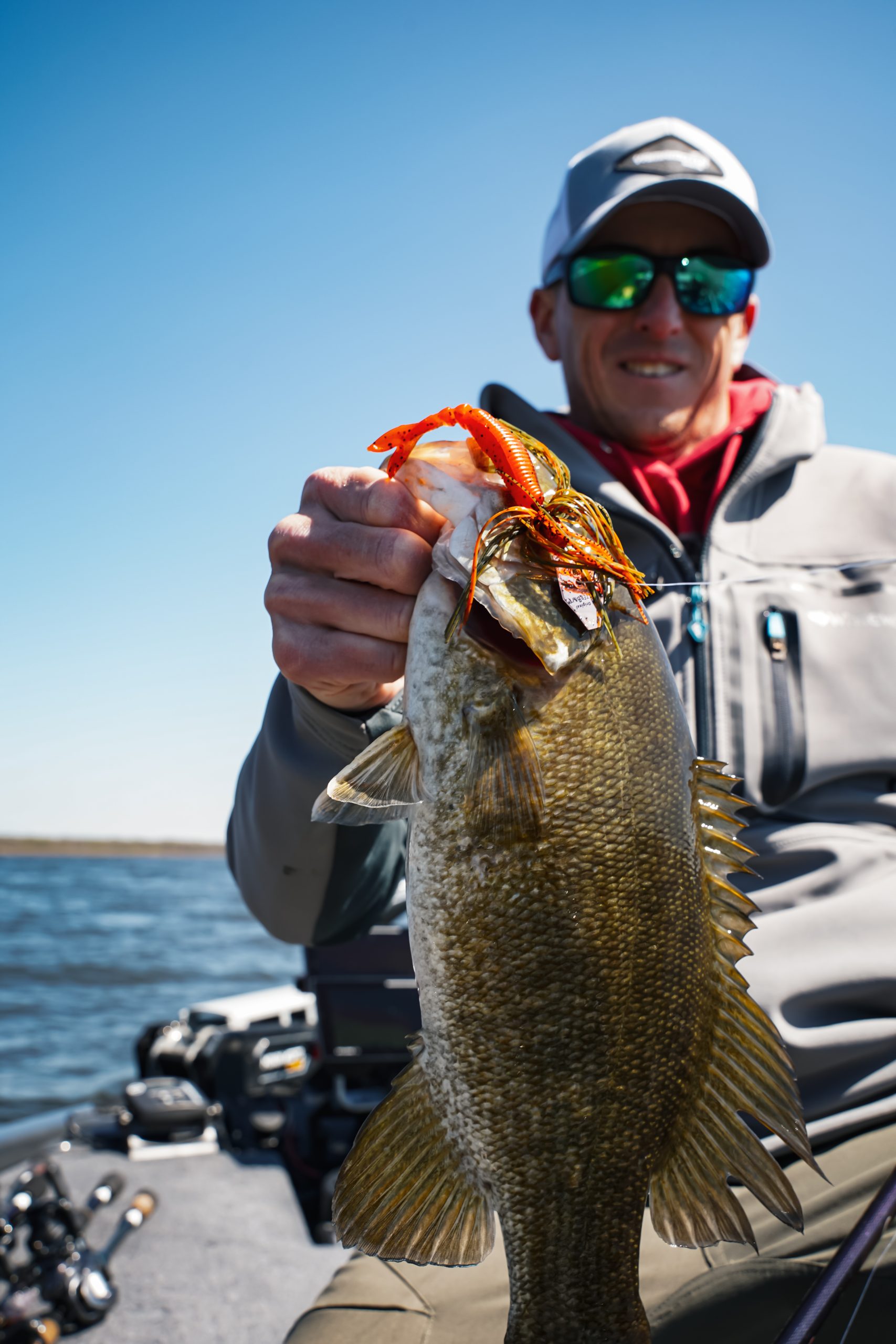
The same goes for flats. As you bring a medium-diving crankbait like the Northland Fishing Tackle Elite Sunny B, or the deeper-diving Elite Sunny B Deep, over the flat, look for holes in the weeds. These holes are likely sand spots that create small, natural edges where bass ambush food.
These baits are ideal as they hit the needed depth range and can be altered ever-so-slightly by increasing or decreasing the pound-test of your line. Making long casts not only helps cover water, but also ensures that your crankbait achieves its target depth. I fish my crankbaits on Seaguar Inviz X 15-pound test fluorocarbon to start but will go down to 10- or 12-pound test if I need to get the bait deeper, or up to 17-pound if I want to keep my bait higher in the water column.
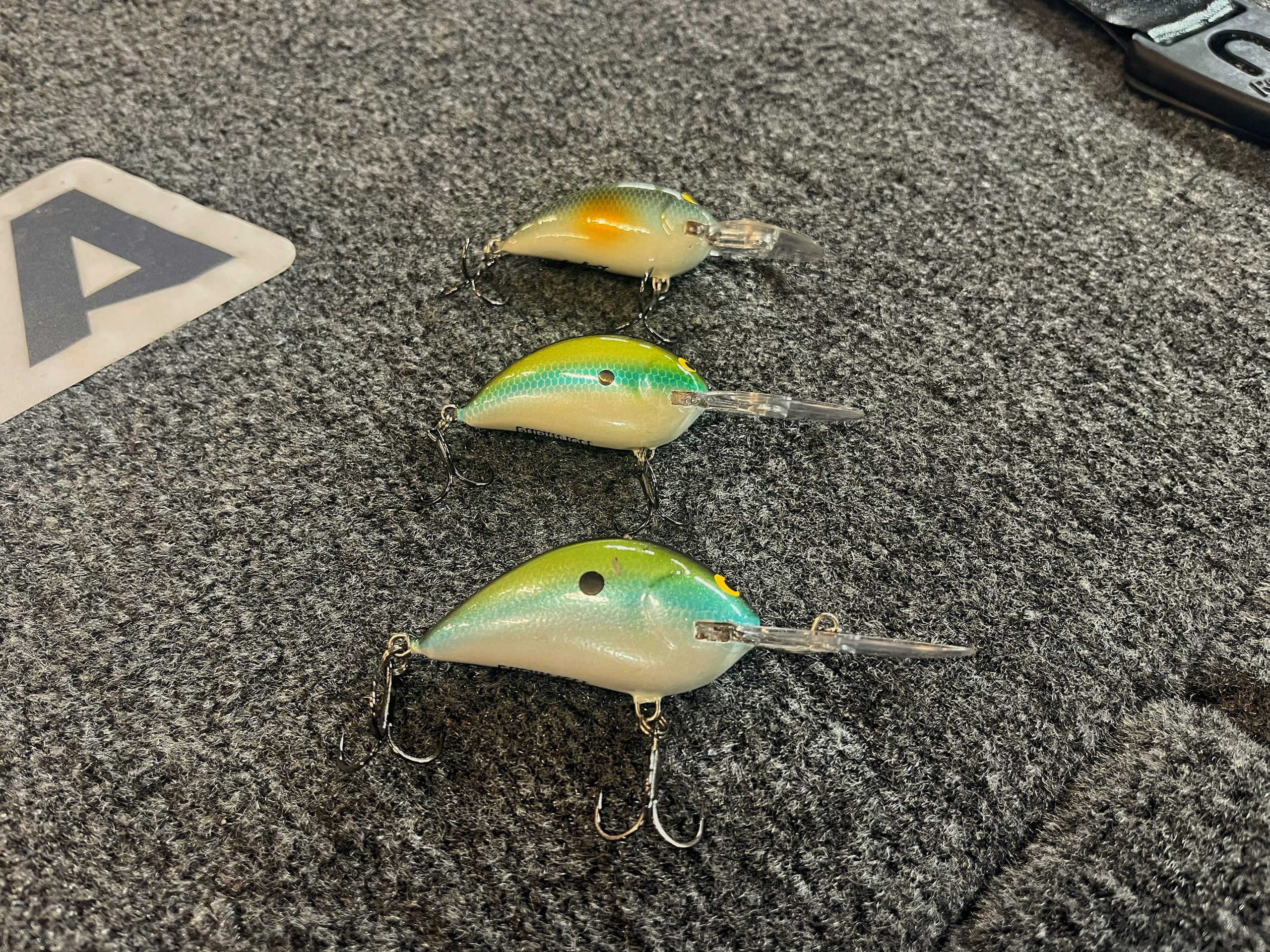
Flipping shallow depths
Some bass will stay in the shallows and lock onto cover such as boat docks, weed clumps or laydowns, while others will hold in deeper water along weed lines. A Texas-rigged soft plastic can be used in both places.
As I look for shallow water to cover and target, I again look for differences that may attract a school of bass, or isolated cover that will attract bass on an otherwise barren stretch of bank.
Are you enjoying this post?
You can be among the first to get the latest info on where to go, what to use and how to use it!
The depth of the shallow-water cover you are flipping may also change: Sometimes, fish will be dirt-shallow underneath a boat dock or on a laydown. Other times, bass set up on boat docks, laydowns or weed clumps positioned over deeper water.
When flipping shallow-water vegetation, I look for the “cleanliness” of the vegetation. Many times, bass hold in one specific type of vegetation, or maybe two mixed together. But looking for a good, green clump of vegetation up shallow is likely to yield a big summertime bass!
By changing up the size of the tungsten weight, you can flip a Texas-rigged soft plastic to the shallows while still being able to pitch it into holes along a weed line. Since I am making short flips or pitches in and around heavy cover, I spool up with Seaguar AbrazX fluorocarbon line in 20-pound test.
A wide array of plastics can be rigged on a Texas-rig. I employ several different styles until the bass clue me in on what they prefer that day. My top choices include a Yamamoto Baits Flappin’ Hog or 4-inch Yamacraw. Using a specifically designed flipping hook like the a 5/0 TroKar TK133 Pro V Bend aids in the hook-up and landing of bass when making short flips or pitches.
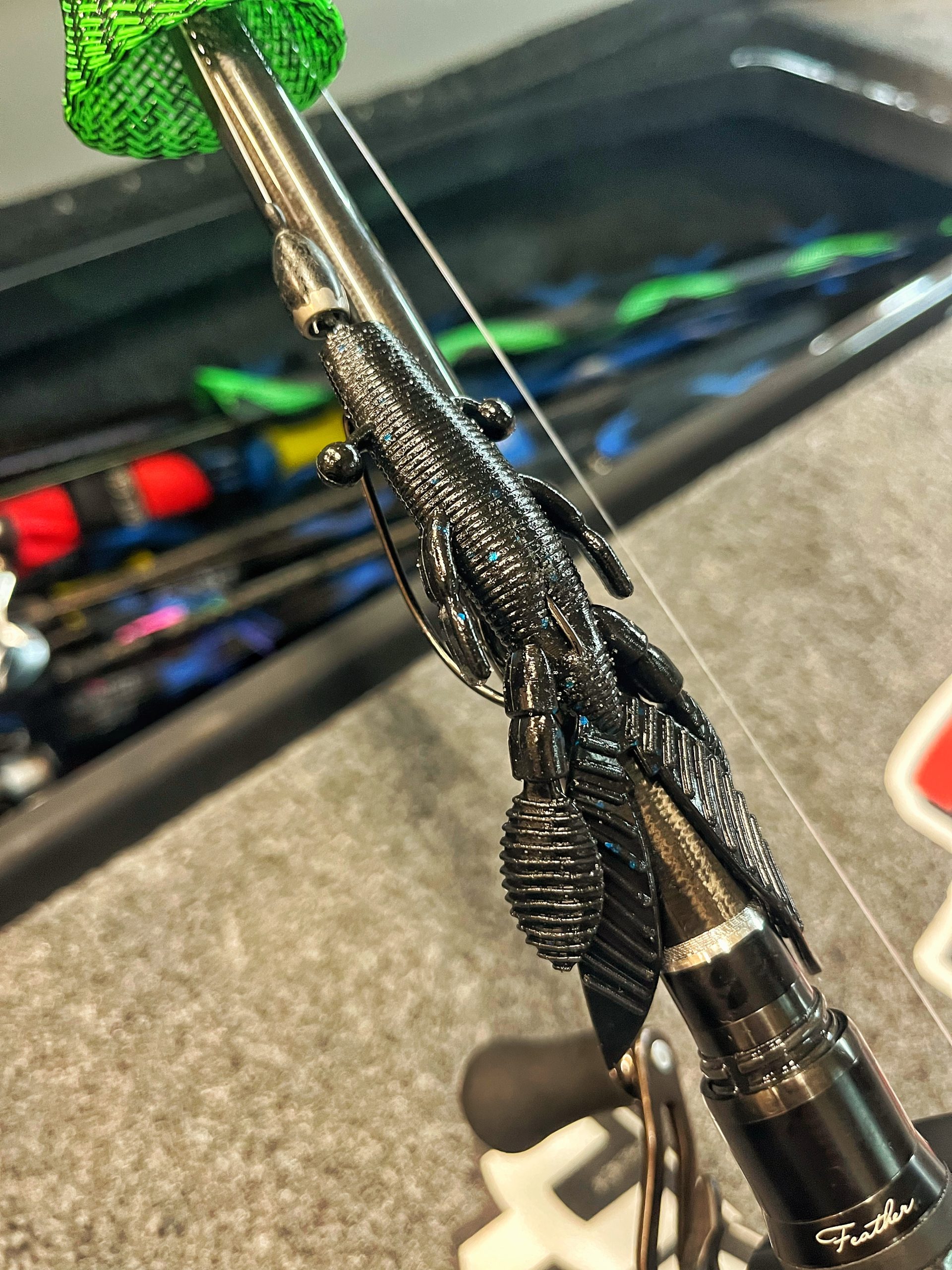
Target vegetation
Once bass fully lock onto weed lines, a jig worm is a great presentation. It puts an effective soft stick bait or plastic worm on a jig head, which allows it to sink quicker while keeping an open hook; you now can pop that bait out of the weeds to generate a reaction strike. My go-to lure is a Northland Fishing Tackle Nedster 1/8-ounce head with a Yamamoto 3-inch Ned Senko threaded on. This bait has their mega floater formula and will stand up on the Nedster.
I like going with this finesse approach. By the time bass have settled into this pattern; they have often been hammered by anglers using countless other lures. It has an exposed hook; as it falls along the weed edge and gets hung on a strand of grass, a quick pop of your rod will rip the lure out of the vegetation and send the lure up in the water column; followed by it resuming it is descent to the bottom. This erratic action often triggers strikes.
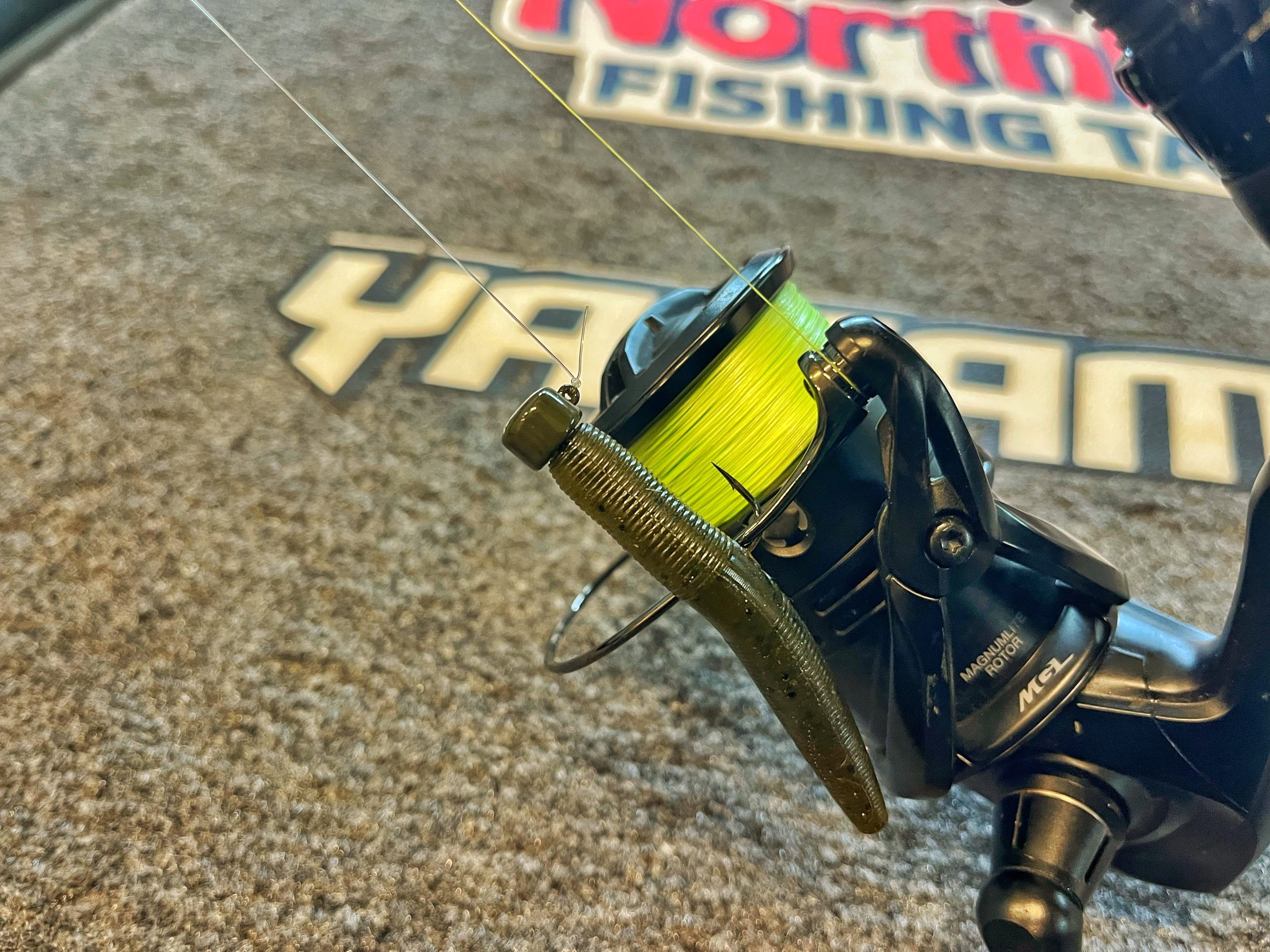
Being able to achieve the above task requires the right gear. You want to be able to make long casts so your bait will be in the strike zone the longest. I use a MH Spinning Rod with a spinning reel spooled with 20-pound Seaguar Smackdown braid in Flash Green as my main line, connected to an 8- or 10-pound Seaguar Gold Label Fluorocarbon leader.
The key to fishing these areas is to find where vegetation and hard-bottom areas meet. To locate these areas, I idle along a weed line or point, keeping a keen eye on my Humminbird Xplore units with MEGA Imaging, along with MEGA 360 Imaging. I look for isolated patches of vegetation that bass may be schooled up on, or a lone hard-bottom spot that is open in an otherwise vast, emergent weed bed.
With summer finally here, take every advantage you can to hit up your favorite lake and put these three techniques to use. You’ll be glad you did.
MWO
SHARE THIS POST
Did you enjoy this post?
You can be among the first to get the latest info on where to go, what to use and how to use it!
Glenn Walker
Glenn Walker has been fishing Minnesota and Mississippi River tournaments for more than 15 years, spreading his passion and knowledge of the sport via articles and videos. For more information, check out glennwalkerfishing.com or on Facebook @GlennWalkerFishing.
